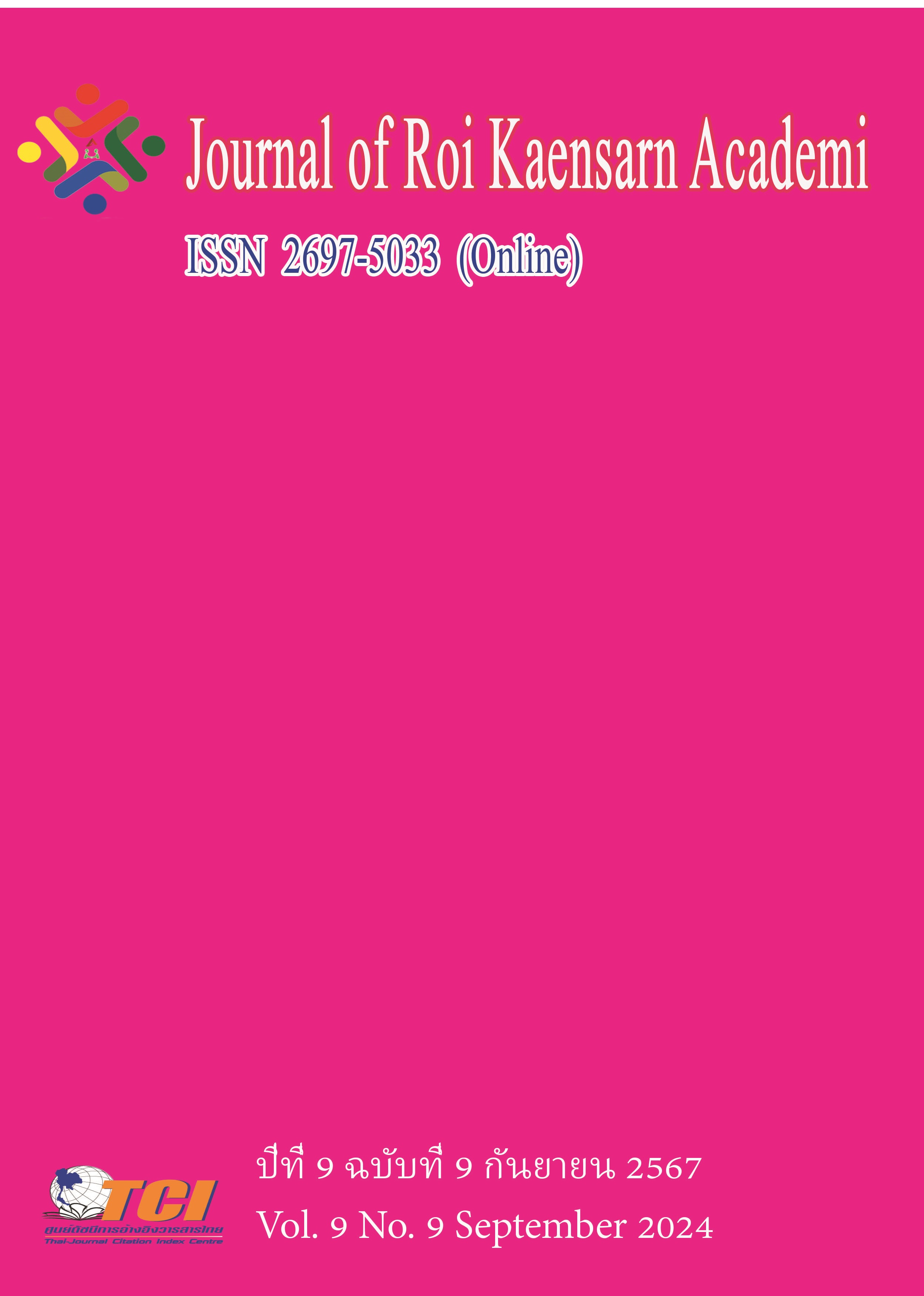The influence of mobile phone dependence on learning investment for Chinese higher vocational students: a pre-test study on the chain mediation effect of academic delay and time management tendency
Main Article Content
บทคัดย่อ
This research aimed to investigate the impact of mobile phone dependence on learning input among Chinese vocational students. The study focused on the chain mediation role of academic delay and time management tendencies, including an exploration of gender differences. The research sample consisted of higher vocational students, and the research instruments used were the Mobile Phone Dependency Scale, Learning Input Scale, Academic Delay Scale, and Youth Time Management Scale. Data collection involved a pre-questionnaire survey, and data analysis was conducted through project analysis, as well as reliability and validity analysis of the research tools. The research results found that mobile phone dependence significantly influenced learning input through academic delay and time management tendencies, with notable gender differences observed in these relationships.
Article Details
เอกสารอ้างอิง
DeFleur, M. L., & Ball-Rokeach, S. (1990). Theories of mass communication. Beijing: Xinhua Publishing House.
Kuang, J. (2013). Empirical research of media dependence theory in mobile media environment — Based on the quantitative analysis of mobile phone dependence of college students. Journalism Knowledge, (2), 3.
Wang, Z. (2013). Study on the relationship between mobile phone dependence and impulsivity among college students [Doctoral dissertation, Suzhou University].
Wu, M. (2008). Questionnaire statistical analysis practice: SPSS operation and application. Chongqing: Chongqing University Press.
Xie, X. (2004). The empirical study of the "media dependence" theory in the Internet environment. Journal of Shijiazhuang University of Economics.
Zhang, Y. (1997). A unique theory of mass communication effect — media system dependence theory. Journalism University, (1), 5.
Boyd, D. (2014). It's Complicated: The Social Lives of Networked Teens. Yale University Press.
Pariser, E. (2011). The Filter Bubble: What the Internet is Hiding from You. Penguin Press.
Sunstein, C. R. (2017). #Republic: Divided Democracy in the Age of Social Media. Princeton University Press.
Kross, E., et al. (2013). Facebook Use Predicts Declines in Subjective Well-Being in Young Adults. PLOS ONE, 8 (8), e69841.
Griffiths, M. D., Kuss, D. J., & Demetrovics, Z. (2014). Social Networking Addiction: An Overview of Preliminary Findings. In K. P. Rosenberg & L. Curtiss Feder (Eds.), Behavioral Addictions: Criteria, Evidence, and Treatment (pp. 119-141). Elsevier.
Przybylski, A. K., et al. (2013). Motivational, Emotional, and Behavioral Correlates of Fear of Missing Out. Computers in Human Behavior, 29 (4), 1841-1848.
Oinas-Kukkonen, H., & Harjumaa, M. (2009). Persuasive Systems Design: Key Issues, Process Model, and System Features. Communications of the Association for Information Systems, 24, 485-500.
King, D. L., Delfabbro, P. H., & Griffiths, M. D. (2010). Video Game Structural Characteristics: A New Psychological Taxonomy. International Journal of Mental Health and Addiction, 8, 90-106.
Kraidy, M. M. (2016). The Naked Blogger of Cairo: Creative Insurgency in the Arab World. Harvard University Press.
Iyengar, S., & Hahn, K. S. (2009). Red Media, Blue Media: Evidence of Ideological Selectivity in Media Use. Journal of Communication, 59 (1), 19-39.
Sundar, S. S., et al. (2017). A Theoretical Framework for Multimodal Messages: Modality Interactivity Affordances (MIA). Journal of Communication, 67 (3), 388-410.
Lazer, D. M. J., et al. (2018). The Science of Fake News. Science, 359 (6380), 1094-1096.
DeFleur, M. L., & Ball-Rokeach, S. J. (1989). Theories of Mass Communication. Longman.

